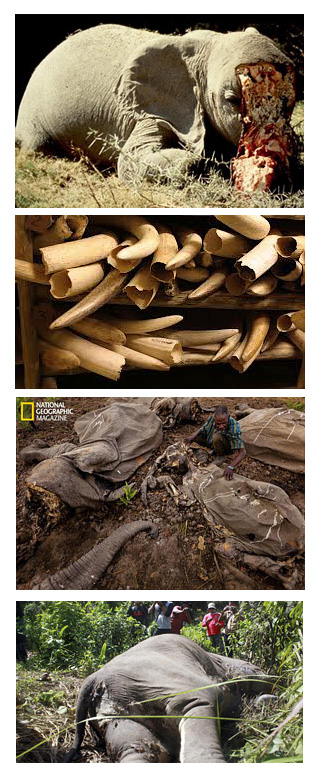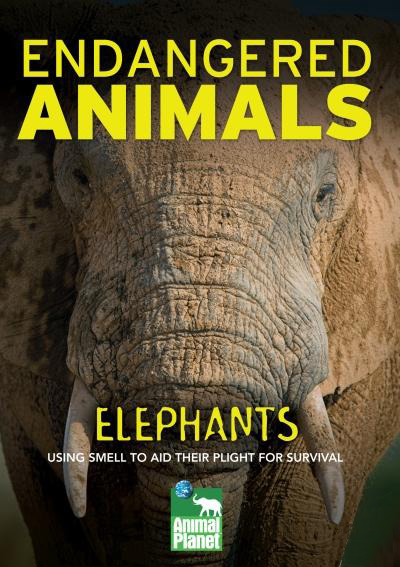Endangered: Elephants.
The elephant is a regal, powerful creature that has been intrinsically linked to the earth’s economy and environment since it first came to be. The elephants’ role in history as important, having served as beasts of burden; in some civilizations, elephants even have been regarded as gods and served as symbols of royalty. Their tusks are prized for their ivory and their intelligence has been used in a variety of ways; in popular culture, they have entertained millions in circuses worldwide.
The African elephant once roamed the entire continent of Africa, and the Asian elephant ranged from Syria to northern China and the islands of Indonesia. These abundant populations have been reduced to groups in scattered areas south of the Sahara and in isolated patches in India, Sri Lanka, and Southeast Asia.
“Demand for ivory, combined with habitat loss from human settlement, has led to a dramatic decline in elephant populations in the last few decades,” the site states. “In 1930, there were between 5 and 10 million African elephants. By 1979, there were 1.3 million.
Worldwide concern over the decline of the elephant led to a complete ban on the ivory trade in 1990. Elephants have been placed on Appendix I of CITES, the Convention on International Trade in Endangered Species, which means all trade in elephant parts is prohibited. Some governments have cracked down hard on poachers. In some countries, park rangers are told to shoot poachers on sight.
Not all governments support the ivory ban. In Zimbabwe, South Africa, and Botswana, for example, people farm elephants on ranches for trophy hunters. Government officials argue that trade in ivory should be regulated, not prohibited. They say countries that are managing their elephants well should be allowed to sell ivory in order to pay for conservation measures, such as park guards and equipment.
I n 1989, when they were added to the international list of the most endangered species, there were about 600,000 remaining, less than one percent of their original number.
n 1989, when they were added to the international list of the most endangered species, there were about 600,000 remaining, less than one percent of their original number.
Asian elephants were never as abundant as their African cousins, and today they are even more endangered than African elephants. At the turn of the century, there were an estimated 200,000 Asian elephants. Today there are probably no more than 35,000 to 40,000 left in the wild.”
Wild elephants have strong family ties. The females and young are social, living in groups under the leadership of an older female or matriarch. Adult males are solitary, although they stay in contact with the females over great distances, using sounds well below the range of human hearing. Family groups communicate with each other using these low-frequency vibrations.
It is an eerie sight to see several groups converging on a waterhole from miles apart, apparently by some prearranged signal, when human observers have heard nothing.
The natural lifespan of an elephant, about 70 years, is comparable to a human’s. Elephants reach breeding age at about 15 years of age. Females generally give birth to one 200-pound baby after a 22-month pregnancy.
Bagheera.com also describes elephants as a keystone to the African landscape: “They pull down trees, break up bushes, create salt licks, dig waterholes, and forge trails. Even elephant droppings are important to the environment. Baboons and birds pick through dung for undigested seeds and nuts, and dung beetles reproduce in these deposits. The nutrient-rich manure replenishes depleted soil and is a vehicle for seed dispersal. Some seeds will not germinate unless they have passed through an elephant’s digestive system.”
But because they eat so much they need a large amount of habitat and humans, have become their direct competitors for living space. “Human populations in Africa and Asia have quadrupled since the turn of the century, the fastest growth rate on the planet. Forest and savanna habitat has been converted to cropland, pastureland for livestock, and timber for housing and fuel.” Hunting has also been a major cause in the decline in elephant populations.
Humans first tamed Asian elephants more than 4,000 years ago. In the past, humans used elephants in war. Elephants have been called the “predecessors to the tank” because of their immense size and strength. They were important to military supply lines as recently as the Vietnam War in the 1960s.
Although African elephants are harder to train than Asian, they too have worked for humans, mostly during wartime. For example, the elephants that carried Hannibal’s troops across the Alps to attack the Romans in 200 B.C. were African.
In modern times humans use elephants primarily for heavy jobs like hauling logs. An elephant is the ultimate off-road vehicle and can get tremendous traction even on slippery mud. An elephant actually walks on its toes, aided by a great flesh-heel pad that can conform to the ground.
We at GreenDustries feel empathy for an animal that is so vital to the planet, whose existence is reduced to the price of its ivory. As we continue our drive toward a greener planet we will also continue to bring to light the disaster that humans have wrought on animals and environments across the globe.
In Chinese, the phrase “to ride an elephant” sounds the same as the word for happiness. When Thailand was called Siam, the sacred White Elephant dominated the flag and culture. According to Thai legend, in the beginning all elephants were white and flew through the air, like the clouds and rain.
Thousands of years later, a white elephant entered the side of Queen Sirimahamaya as she lay sleeping. Later she gave birth to Prince Siddhartha, the future Guatama Buddha. Among the predominantly Buddhist kingdoms of Southeast Asia, the most auspicious event possible during a monarch’s reign was the finding of a white elephant.
Are reserves the solution to the problem of habitat loss? What else could or should be done?
Visitors: 355504




No comments yet.